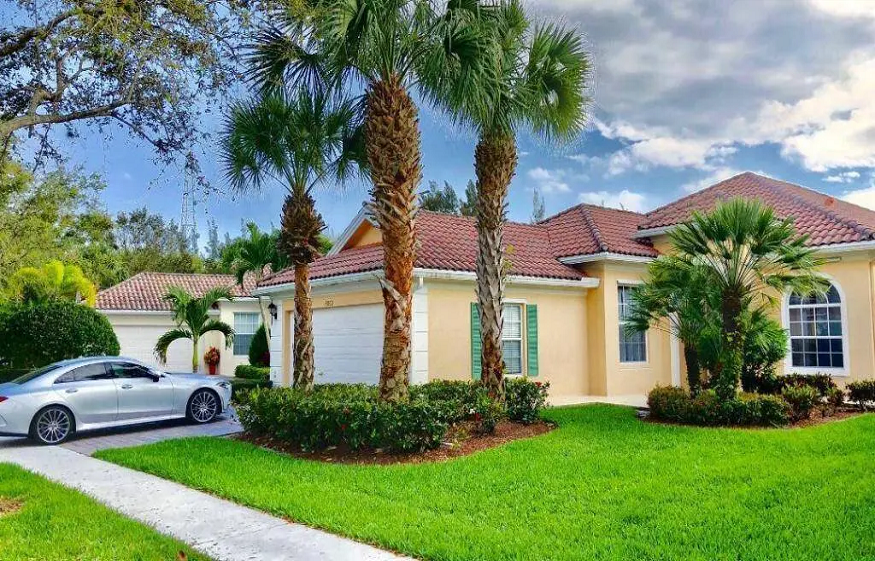Is Florida a Good Place to Live? Explore the Cost of Living and Homes for Sale
Florida is more than beaches, palm trees, and sunshine. It’s one of the fastest-growing and most diverse states for relocation in the U.S. Each year thousands of people move here for warm weather, no state income tax, and lifestyle options that include both urban and rural living.
But the question that remains for many buyers is if Florida is affordable once you factor in housing, insurance, utilities, and everyday costs. This guide breaks down the realities so you can decide whether the Sunshine State fits your budget and life goals.
Why Do People Move to Florida?
People relocate to Florida for four main reasons: weather, taxes (no state income tax), job opportunity in specific metros, and lifestyle. Retirees flock to Naples, Sarasota, and coastal towns for healthcare and quiet life. Young professionals and entrepreneurs head to Miami for international business and creative industries. Families often favor Orlando, Tampa, or suburban pockets with strong schools.
What’s changed recently is scale: demand surged during the pandemic, pushing prices higher in coastal and big-metro areas. That wave has slowed in many places, giving buyers more choices and negotiation power, particularly in inland and secondary markets where supply and pricing are more reasonable.
Cost of Living in Florida in 2025
The cost of living in Florida varies widely by city and neighborhood. Below are the major buckets buyers should analyze:
- Housing: The statewide median home price in 2025 sits roughly in the low-to-mid $400Ks (regional variation is large). Miami and Naples skew far above the state median ($640K and $755K median examples), while inland markets like Ocala or Homosassa Springs are often near $290K — accessible for many first-time buyers. Rental markets mirror the same split; expect $2,800–$3,200/month in Miami vs $1,200 or less in smaller inland towns.
- Utilities: Florida’s warm climate makes air conditioning a year-round expense. Typical electricity bills run $180–$220/month; combined utilities (water, internet, trash) commonly approach $250–$320/month in many areas, more in coastal communities where operating costs rise.
- Groceries & Daily Goods: Grocery spending in Florida tends to be slightly above national average at roughly $360–$400 per household per month. It costs more in South Florida due to higher distribution and import costs.
- Healthcare: Expect healthcare costs 5–7% higher than the U.S. average in many Florida counties, influenced by a large retiree population and concentration of specialty services in coastal metros.
- Transportation: Outside a few walkable neighborhoods in Miami and downtown hubs, Florida is car-dependent. Auto insurance is notably high (often $2,500–$3,000/year), and commuting costs vary by distance and fuel prices.
- Taxes: Florida levies no state income tax. Property taxes are moderate (effective rates near 0.9% on average), but some coastal counties and high-service jurisdictions may run higher. Sales taxes usually fall in the 6–7.5% range depending on county add-ons.
Housing Market Snapshot and Regional Differences
Florida’s statewide median home price ranges from $382,000–$410,000. This sits below the national median of $420,000, and you’ll find more affordable areas within certain regions. Here are useful regional snapshots that reflect different buyer profiles:
- Miami–Fort Lauderdale: High international demand and luxury inventory push medians near $640K. High-rise condos and waterfront homes dominate; expect premium pricing and localized inventory constraints (limited beachfront supply).
- Naples: A retiree and luxury market with medians near $755K. Strong appreciation, high build quality, but higher insurance and HOA costs.
- Orlando: Family-friendly with medians around $449K; suburbs like Winter Park and Lake Mary appeal to school-focused families. New-build neighborhoods and planned communities are common.
- Tampa / St. Petersburg: Rapid growth, diversified job market, and expanding suburbs. Pricing is competitive but offers more room than South Florida.
- Jacksonville: Affordability with growing logistics, healthcare, and military-related employment; good value for larger lot single-family homes.
- Inland & Secondary Markets (Ocala, Lakeland, Homosassa): Median prices near $290K or lower; strong options for first-time buyers and investors seeking higher rental yields.
New construction remains strong in growth corridors (Tampa, Orlando, Jacksonville). Homes are also spending longer on market than the pandemic boom years by roughly 70–80 days on average in many areas. This gives buyers more negotiating room. Coastal, limited-supply neighborhoods still hold premium pricing.
Career, Lifestyle, and Where to Live
Choosing a city in Florida often comes down to job prospects vs. lifestyle priorities.
- Miami: Best for international business, finance, media, and a multicultural nightlife and dining scene. Neighborhoods like Brickell and Coconut Grove suit professionals; Coral Gables and Weston are family favorites.
- Tampa: Strong in finance, healthcare, and logistics. Offers a blend of urban amenities with suburban living options and Gulf beaches nearby.
- Orlando: Not just theme parks — major growth in tech, health, and entertainment industries. Suburbs provide family-oriented communities with newer housing stock.
- Jacksonville: Affordable metro with logistics, banking, and military influence. Good for buyers seeking space at lower prices.
If you’re remote or hybrid, inland towns offer huge affordability: larger lots, lower taxes, and lower insurance. However, they continue to provide access to regional airports and city services within reasonable drives.
Practical Tips for Homebuyers in Florida
These actionable recommendations will help you avoid common cost surprises:
- Budget for Insurance Early: In coastal or hurricane-exposed areas, wind and flood coverage can add thousands annually. Even inland buyers should verify flood maps and any increased premiums.
- Compare Taxes and HOA Fees: Two homes with the same mortgage can have very different monthly costs once property tax rates and HOA dues are included.
- Consider the Neighboring Environment: Coastal homes often appreciate faster due to constrained supply, but inland markets give better immediate affordability and rental yields.
- Check New-Build Incentives: Developers often offer appliance upgrades, builder credits, or help with closing costs in competitive markets.
- Explore First-Time Buyer Programs: Many Florida counties offer down-payment assistance, closing-cost grants, and mortgage credit certificates — especially in high-demand regions.
- Run a Full Cost Model: Use a mortgage calculator that includes property taxes, insurance, HOA, and utilities before you bid. Use Florida’s mortgage calculator on Houzeo—America’s best homebuying website, to visualize monthly payment impacts.
Investment Lens: Rentals and Long-Term Growth
For investors, Florida remains attractive for several reasons. Tourism and seasonal demand support short-term rental income in beach towns and near theme parks. Inland markets often yield better cap rates for long-term rentals due to lower entry prices. Long-term demand is buoyed by continued migration, which includes retirees, remote workers, and people relocating from high-tax states. This supports steady appreciation across many markets.
Be mindful of regulations: some municipalities restrict short-term rentals or require licenses. Finally, always check local ordinances before purchasing for STR (short-term rental) purposes.
Is Florida a Good Place to Live?
Yes, if you pick the right place for your priorities. Florida offers tax advantages, diverse job markets, and lifestyle options from urban to rural. However, the tradeoffs include high coastal insurance costs, weather risk, and higher prices in certain metros.
To get the best deal on a home in Florida in 2025, match housing choices to your budget and risk tolerance. Explore inland markets for affordability and cash flow, coastal markets for lifestyle and potential appreciation, and urban cores for career opportunities.
Thinking of moving soon? Find 470,000+ Florida homes for sale on Houzeo, America’s best real estate app. Download the free app on the Apple App Store or Google Play and start comparing neighborhoods today.




Post Comment
You must be logged in to post a comment.